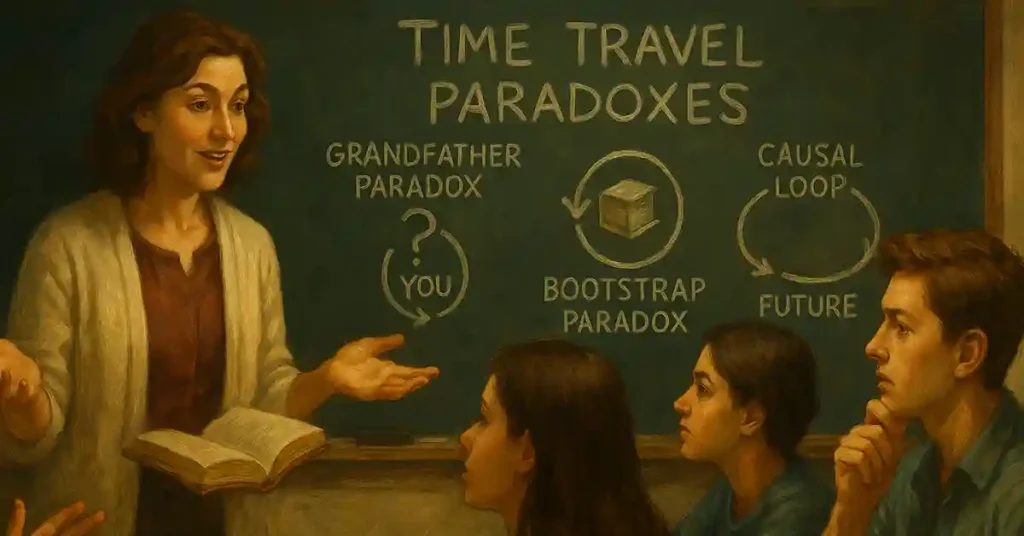So you want to teach your students about time travel paradoxes. You brave, brilliant soul.
Maybe you’ve read The Silent Guardian and thought, “Yes, let’s absolutely unpack the existential horror of collapsing timelines with a room full of teenagers.” I support this decision. There is no better way to build critical thinking skills—and also make your students deeply question whether they should ever step into a time machine.
Here’s how I teach paradoxes in my classroom, using storytelling, logic, and a healthy dose of sci-fi curiosity.
Step 1: Hook ‘Em with a Paradox
Start with a simple one: the Grandfather Paradox.
“If you travel back in time and stop your grandfather from meeting your grandmother, you were never born. But if you were never born, you couldn’t have gone back to stop him. So… what just happened?”
Let them stew in it. Then ask: Is time fixed, or can it be changed?
This single question can launch an entire class discussion—bonus points if someone brings up Avengers: Endgame or Back to the Future.
Step 2: Show, Don’t Just Tell
At this point, I introduce them to this Time Travel Paradox Examples page from The Silent Guardian.
We explore the most common paradoxes:
Bootstrap Paradox (Where did the information come from?)
Causal Loop (The past and future create each other)
Predestination Paradox (No matter what you do, it still happens)
Let them read and pick one that makes their brain feel like it’s been turned into a pretzel. Have them summarize it in their own words. You’ll quickly find out who the future philosophers and sci-fi writers are.
Step 3: Make Them Solve the Unsolvable
Now the fun part.
Split your class into small groups and give each a paradox to “solve.” Their task? Try to make it logically consistent—or explain why it’s totally bonkers and impossible. Encourage diagrams, debate, and that one kid who wants to cite Doctor Who as an academic source.
You’ll get responses ranging from “It’s a closed causal loop, obviously,” to “This makes my soul hurt.”
Either way: they’re thinking.
Step 4: Bring It Back to Story
After the chaos of theoretical physics and timeline-breaking shenanigans, wrap it up with storytelling.
Ask: How can paradoxes be used to create tension or character conflict in a story?
This is where The Silent Guardian comes in. Paradoxes aren’t just thought experiments—they’re narrative goldmines. The hero’s mission is twisted because of a misunderstanding rooted in a paradox. Truth becomes uncertain. Trust collapses. Students suddenly realize: paradoxes aren’t just puzzles. They’re emotional.
Bonus: Creative Writing Prompt
Have your students write a one-page story that includes a paradox.
Examples:
A character receives a letter from their future self that tells them not to read the letter.
A device that prevents disasters, but only after they’ve already happened.
A villain trying to stop their own birth, but failing because they already exist.
This is where you get to see your students’ imaginations go wild—and possibly spark a love of speculative fiction.
Final Thoughts (Before the Timeline Resets)
Teaching time travel paradoxes doesn’t have to feel like quantum physics class. With the right tools—and a great story like The Silent Guardian—you can introduce students to mind-bending concepts in a way that’s engaging, thought-provoking, and even a little hilarious.



